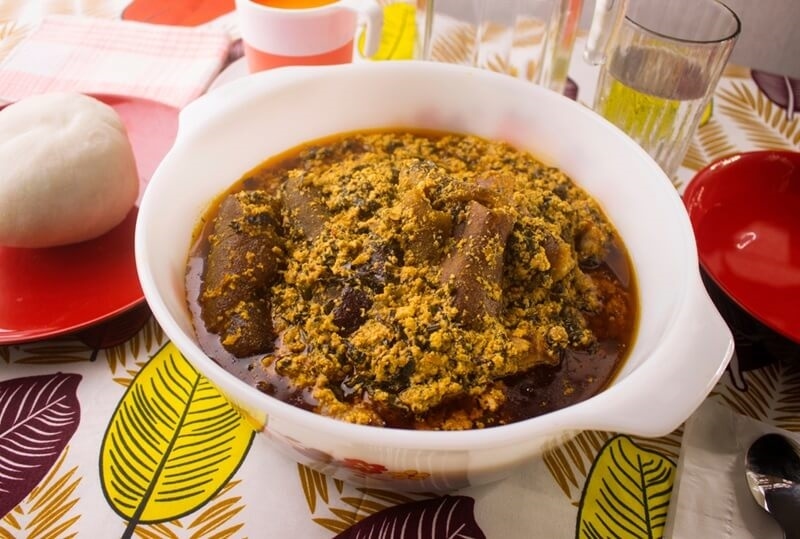
African soups are more than just meals. They’re stories in a pot—flavors layered through tradition, comfort, and creativity. Whether it’s a bubbling pot of egusi in Nigeria, a rich peanut soup in Ghana, or a spicy fish broth in Senegal, soups are part of everyday life. They comfort, they nourish, and they bring people together.
Cooking these soups at home can feel intimidating at first. Ingredients can be bold, cooking methods can seem unique, and textures are sometimes unlike what most Western kitchens are used to. But here’s the thing: once you understand the basics, it’s fun. Messy at times, yes. But fun. And with the right guidance, your kitchen can smell (and taste) like a Sunday family table in Lagos or Accra.
Let’s dive into nine practical African soup cooking tips that will make your soups richer, smoother, and downright irresistible.
It sounds simple, but it’s where flavor begins. Fresh fish, goat meat, or chicken will give your broth a clean taste. Dried stockfish or crayfish add that signature umami kick, but they should be good quality—no funky odors. Vegetables like spinach, ugu, or okra should be bright and firm, not wilted.
Don’t skip this step. If your ingredients are tired, the soup will taste flat. African cooking leans heavily on freshness to carry flavor through long simmering.
Patience pays off. Many African soup preparation methods start with frying aromatics—onions, peppers, sometimes tomatoes—in palm oil or groundnut oil. It might take longer than you’d expect, but letting that base cook down develops richness.
If you rush and dump everything in at once, you’ll lose depth. Allow meat or fish to brown slightly before simmering. Toast ground spices briefly before adding liquid. These small steps make a big difference.
Palm oil is traditional, but a little goes a long way. You want that deep color and earthy flavor, not a greasy slick floating on top. Pour less than you think, then adjust if needed.
The same applies with groundnut or vegetable oil. Remember, meat and fish release fat during cooking. You can always add more later, but it’s tough to fix if you start with too much.

Texture is king in African soups. Some are silky smooth, others chunky and rustic. But they’re rarely watery. A common challenge for beginners is balance—how thick should the soup really be?
If you’re wondering how to thicken egusi soup, the answer is in the seeds and method. Ground egusi swells as it cooks, but you control thickness by how much water or stock you add and whether you stir often. Blend part of the seeds with onions for a paste, then fold it in gently. That paste thickens better than powder alone.
Other soups use yam flour, cocoyam paste, or okra for natural thickness. The key is not to over-dilute early on. Start thicker, then loosen gradually if needed.
Okra divides people. Some love the slime; others want to reduce it. Both are valid. But either way, you need technique.
If you want a naturally glossy soup, slice okra finely and cook it gently. That draws out the mucilage that thickens broth. If you’d rather control the slime, try flash-frying chopped okra in oil first. That keeps the texture more subtle. These cooking with okra tips help you tailor the soup to your taste rather than fighting the ingredient.
Pair okra with smoked fish or goat meat for deep flavor. And don’t forget to season well—the mild taste of okra loves bold spices.
Salt and stock cubes go in early, but spices and herbs should be layered. Add some at the start, then adjust toward the end when flavors have developed. Common spices include uziza seeds, crayfish powder, chili, ginger, and garlic.
A handful of fresh greens at the finish—bitterleaf, spinach, or ugu—lifts the whole dish. Seasoning in waves means you’ll taste depth rather than just heat or salt.
Here’s where some kitchen magic comes in. Maybe your groundnut soup is too thin, or your tomato-pepper base feels too sharp. Little tricks can fix that.
Adding a spoon of roasted groundnuts softens acidity. Blending part of your stew base into a smooth puree and stirring it back creates body. Some cooks stir in cocoyam paste or yam flour for thickness. These African stews texture hacks save a dish from being average.
Texture also comes from time. Long, slow simmering makes proteins tender and flavors cohesive. Don’t be afraid to let a soup sit on low heat for an extra 30 minutes.
At the end of the day, soups are comfort food. They’re what you eat with family, share with guests, and lean on when you need something hearty. Don’t overthink every step. Experiment, taste as you go, and adjust to what feels right.
Good African comfort food tips usually involve generosity—don’t skimp on meat or fish, make enough for leftovers, and serve with a side that soaks up the soup (fufu, rice, yam, or bread). Comfort is about abundance, not perfection.
Every region has variations. Egusi in Nigeria isn’t quite the same as egusi in Ghana. Peanut soup in Sierra Leone will differ from one in Cameroon. That’s the beauty of it. Learn the basics, then adapt.
Maybe you like it spicier, or you swap spinach for kale because that’s what you find locally. That’s fine. Soups are living traditions—they grow as people make them their own. Stick close enough to the roots, but don’t be afraid to play.
Cooking African soups at home is less about following rigid instructions and more about rhythm—fresh ingredients, patient simmering, and the right balance of textures. Sure, you’ll make mistakes. Too much oil, soup too watery, overcooked meat. Everyone does at first. But each pot teaches you something.
These nine African Soup Cooking Tips aren’t meant to be rules. Think of them as a compass pointing you toward better flavor and more satisfying bowls. Learn the basics of thickening, practice layering spices, and pay attention to texture. And most importantly, cook with generosity. Soups are meant to be shared, and when you share them, you understand why they hold such a special place in African kitchens.
So grab that pot, gather your ingredients, and let the aroma fill your home. You’ll quickly see that the magic isn’t just in the recipe—it’s in the process, the patience, and the joy of serving food that comforts everyone at the table.
This content was created by AI